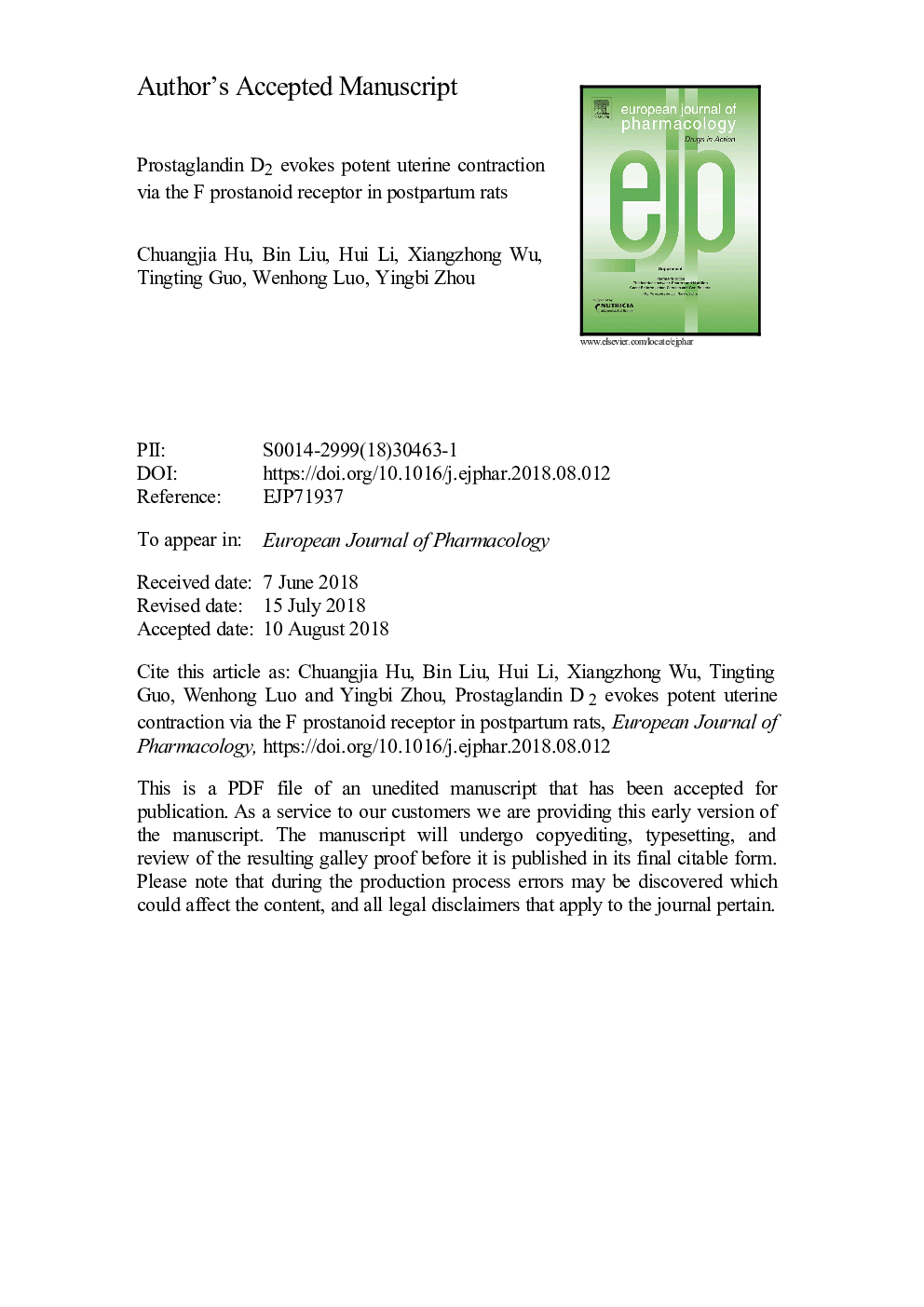| Article ID | Journal | Published Year | Pages | File Type |
|---|---|---|---|---|
| 8944011 | European Journal of Pharmacology | 2018 | 30 Pages |
Abstract
Prostaglandin (PG) D2, a prostanoid known to have hypotensive effect, can evoke increased in vitro prepartum myometrial contraction resulting from up-regulation of the F prostanoid (FP) receptor. The present study further determined postpartum rat uterine responses to PGD2 to evaluate the possibility of the prostanoid becoming a therapeutic for postpartum uterine atony, a major cause of postpartum hemorrhage that can lead to maternal morbidity. In vitro and in vivo postpartum uterine responses to PGD2 were determined and compared to those of prepartum rats. Here we show that in postpartum myometrial strips PGD2 did evoke a contraction sensitive to FP receptor antagonism. Interestingly, this response was not only to a greater extent than that of prepartum rats, but also comparable with the contraction obtained with PGF2α, a therapeutic for postpartum uterine atony but contradicted in conditions including hypertension. Indeed, PGD2 was also found to cause increases of basal uterine contraction under in vivo conditions. Western blots revealed that the expression of FP receptors in postpartum myometrium was higher than that of prepartum rats. Moreover, we noted that the amount of PGD2 produced in postpartum uteri, although lower than that of prepartum rats, was increased compared to non-pregnant conditions. These results thus demonstrate that due to a further up-regulation or high expression of myometrial FP receptors, PGD2 can evoke potent uterine contraction postpartum, and hence the prostanoid, which is naturally synthesized in uterine tissues, could be a potential therapeutic for postpartum uterine atony, especially in settings, such as hypertension.
Related Topics
Life Sciences
Neuroscience
Cellular and Molecular Neuroscience
Authors
Chuangjia Hu, Bin Liu, Hui Li, Xiangzhong Wu, Tingting Guo, Wenhong Luo, Yingbi Zhou,
